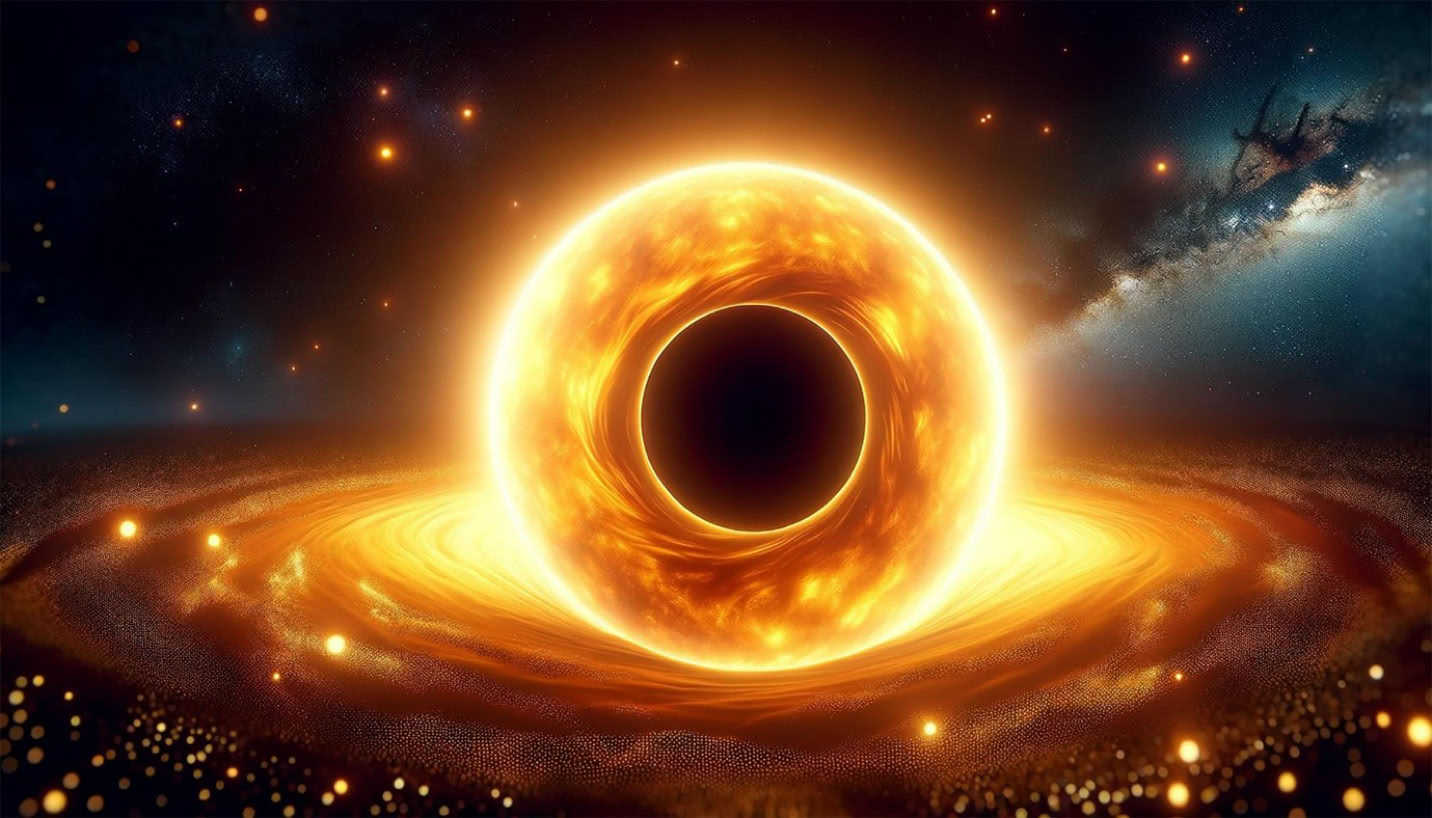by Andrei Militaru
Photo source: https://scitechdaily.com/hawking-stars-what-happens-if-you-put-a-black-hole-into-the-sun/
The most luminous electromagnetic events we had observed in the universe are gamma-ray bursts. On july 2, 2025, The Fermi Gamma-ray Burst Monitor and many others X-ray and Gamma-ray monitors have identified the longest gamma-ray burst that has ever been seen.
The common source for such events are collapsing stars, but the duration of this burst is much longer than what this explanation allows. After going through other possible scenario, including neutron star mergers, supermassive black holes merger, and a white dwarf tidal disruption by a black hole, Eliza Neights and Eric Burns conclude that the likely cause of this burst is the fall of a black hole inside a massive helium star.
When the back hole reaches the core of the star, the core is turned into an accretion disk, and the resulting magnetic field causes the star to explode and create a supernova.
Source: https://arxiv.org/abs/2509.22792
